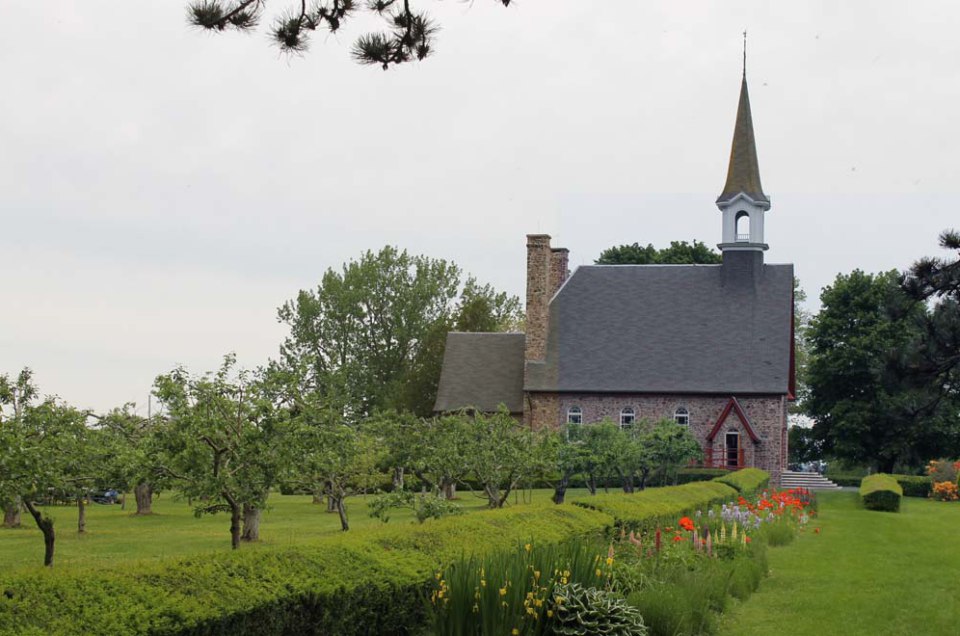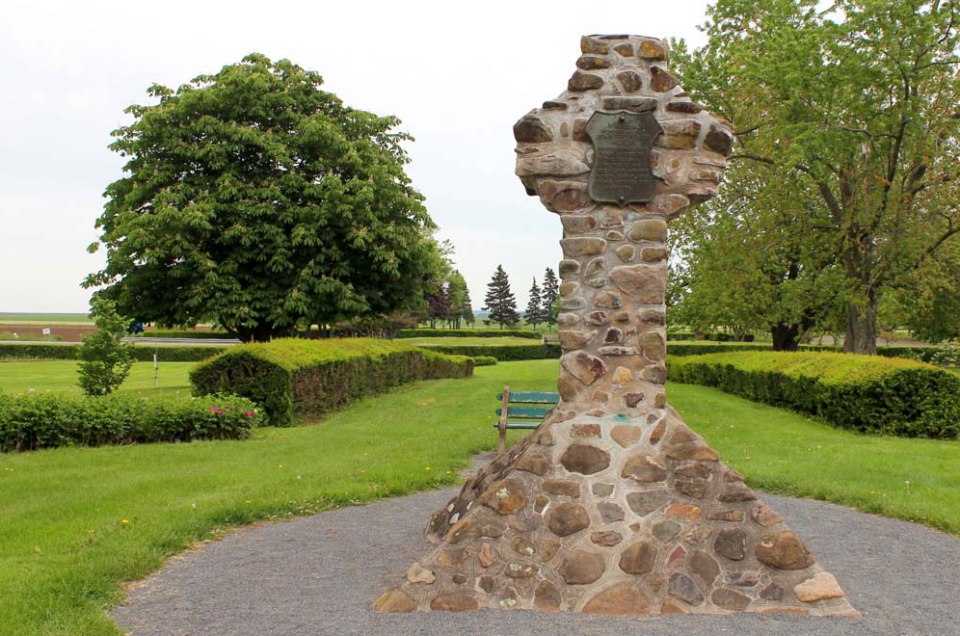Exploring Grand-Pré National Historic Site
Evangeline Statue at Grand-Pré National Historic Site

Evangeline Statue at Grand-Pré National Historic Site
In 1755, 6050 Acadian people, that is descendants of French settlers, were expelled from Nova Scotia by the British. (Many fled to Louisiana, and were early Cajuns, but many died or were killed.) Evangeline, a fictional character in a Henry Wadsworth Longfellow poem about the tragedy, came to symbolize their struggle, and her statue takes pride of place at the site.

Commemorative Church at Grand-Pré National Historic Site
Longfellow’s poem became extremily popular with Americans, who wanted to visit the place where it was set. Nothing remained there, but John Frederic Herbin bought the land where the tragedy happened, and a commemorative church was built on the site. The church was finished in 1922, and became a museum.

Serene interior of the commemorative church.
The church contains specially commissioned artwork showing how events unfolded leading up to, and during, the tragic explusion of the Acadian people from Nova Scotia.

Stained glass window in the commemorative church.
Inside the church is a beautiful stained glass window depicting the deportation of the Acadians.

Rhodedendrons in the gardens of the site.
There are beautiful gardens all around the site, making it a wonderful place to take a picnic.

Bust of Henry Wadsworth Longfellow
It was Henry Wadsworth Longfellow’s 1847 poem Evangeline, A Tale of Acadie, that brought the forgotten plight of the Acadians to the attention of the masses who fell in love with his poem, and ultimately led to the site being created. There is a bust of him in the grounds.

Orchards at Grand-Pré National Historic Site
The Acadians were the first people to bring apples to Nova Scotia, a fruit which is such an important crop in the area to this day. A commemorative orchard sits to the left of the church, banked by gardens planted with poppies.

The Herbin Cross.
When the site was purchased by Herbin, all that remained were a few stone ruins. These stones were gathered and built into this cross, then placed on the site of the old Acadian cemetary. The cross came to be known as the Herbin Cross, as a way of commemorating his work in creating the site.

Inside the visitors center.
Also on site is a visitors center, where you can learn about Acadian culture from their early settlements and relationships with First Nations, up to their present day descendants in Louisiana, Europe, and those scattered all over the world.
In 1755, 6050 Acadian people, that is descendants of French settlers, were expelled from Nova Scotia by the British. (Many fled to Louisiana, and were early Cajuns, but many died or were killed.) Evangeline, a fictional character in a Henry Wadsworth Longfellow poem about the tragedy, came to symbolize their struggle, and her statue takes pride of place at the site.
Other Voices you might like
Michelle Yam
Photographer, Instagrammer
Kristy Bernardo
Chef and Food Rockstar
Oneika Raymond
Solo Travel, Thrill-Seeker, Travel Journalist